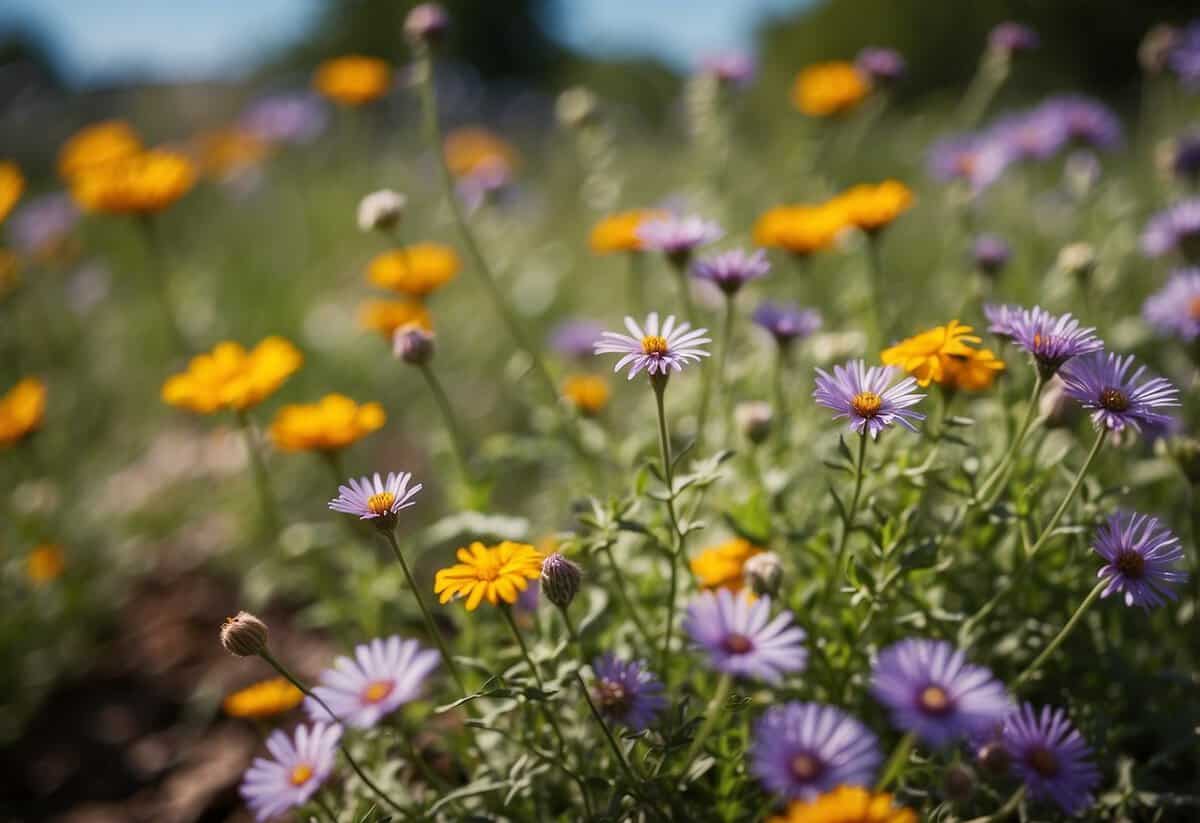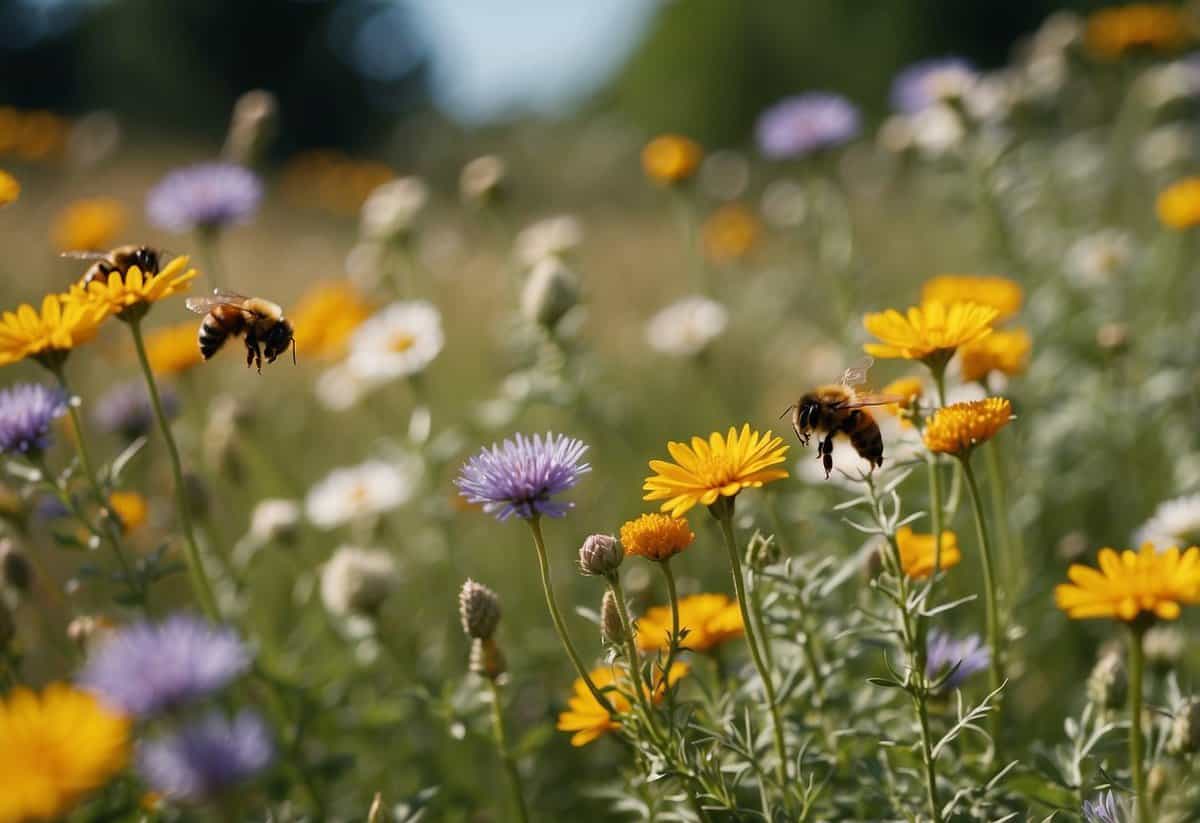Wildflower Garden Tips: Create a Blooming Haven in Your Yard
Creating a wildflower garden in your backyard can bring vibrant colors and attract a variety of pollinators to your outdoor space. Whether you have a large field or a small corner, wildflowers can transform your area into a lively and beautiful oasis.

Wondering how to get started with growing your own wildflower garden? With a few simple tips, you can easily establish a thriving garden that requires minimal upkeep and offers a natural, effortless charm. Let’s explore how to turn your garden into a wildflower wonderland.
1) Choose Native Wildflowers

Picking native wildflowers is key to a successful garden. They are already adapted to your local climate and soil. This means they need less water and care.
Native wildflowers also support local wildlife. Bees, butterflies, and birds all benefit from native plants. Plus, they are usually more resistant to pests and diseases.
You’ll also find that native wildflowers come back year after year. This makes your garden beautiful and low-maintenance. For more about native species, visit the Pioneer Woman guide.
2) Plan for Year-Round Blooms

To enjoy a beautiful wildflower garden all year round, select plants that bloom in different seasons. This way, you’ll always have color in your garden.
Choose early bloomers like daffodils and tulips for a vibrant spring display. For summer, include sunflowers and coneflowers.
In fall, mums and asters provide lovely color. Winter blooms can be achieved with plants like hellebores.
Consider the right location and soil. Well-drained soil and good organic matter are key to healthy growth.
By planting a variety of seasonal flowers, you ensure continuous beauty in your garden.
3) Prepare the Soil

Start by loosening the soil. You should till it to a depth of about 2-3 inches. This helps remove weeds and prepares the ground for planting.
Next, test your soil. It’s good to check its acidity and nutrients. You can use a simple soil testing kit for this.
Remember to add compost or organic matter. This enriches the soil and supports healthy wildflower growth. Keep the soil moist after planting. You might need to water it every day until the seeds germinate.
4) Water Wisely

Make sure you water early in the morning or late in the evening. This prevents the water from evaporating quickly in the heat.
Use a soaker hose or drip irrigation system. These methods deliver water directly to the roots, minimizing waste.
Focus on watering deeply but less frequently. This encourages deeper root growth, making your plants more resilient during dry periods.
5) Mulch Your Garden

Mulching helps keep the soil moist and cool, which is great for your wildflowers. Organic mulch, like wood chips or straw, is ideal. It slowly breaks down and improves your soil’s health over time.
Avoid using rocks as mulch as they can overheat and harm the plants. Stick to materials that benefit the soil.
6) Control Weeds Naturally

One way to keep weeds out of your wildflower garden is to use mulch. Applying a 2-4 inch layer of organic material like wood chips or shredded leaves can prevent weed seeds from sprouting.
Another method is mowing your garden every two weeks. This keeps the wildflowers from getting overgrown and helps control weed growth.
Starting with a clean slate by removing existing weeds will also aid in maintaining a weed-free garden.
7) Attract Pollinators

You can attract pollinators by planting a variety of flowers that bloom from early spring to late fall. Bees love clusters of small flowers, while hummingbirds are drawn to tubular flowers. Butterflies prefer colorful clusters.
Leave parts of your lawn unmowed to create habitats for pollinators. Using native plants helps too, as they are adapted to your local environment.
Avoid pesticides and herbicides, as they harm pollinators. Even small changes, like a flower pot or garden patch, can make a big difference. Happy gardening!
8) Deadhead Spent Flowers

Deadheading spent flowers is a key to keeping your wildflower garden looking fresh and vibrant.
Cut below the wilted bloom, just above the next pair of leaves. Removing old flowers can help promote new blooms and keep your garden neat.
You can use pruning shears or even your hands, depending on the plant.
9) Use Companion Planting

Companion planting is a great way to boost your wildflower garden. By planting certain flowers together, you can help them grow better.
Mixing flowers, herbs, and vegetables can improve plant health. Some plants keep pests away from others, making them a natural way to protect your garden.
Planting tall flowers can provide shade for shorter ones. This creates a balanced and healthy ecosystem in your garden. For more tips on companion planting, check out this guide.
10) Avoid Chemical Pesticides

Using chemical pesticides in your wildflower garden can harm beneficial insects like pollinators. Instead, turn to nature for help.
Plant wildflowers such as oxeye daisies and red clovers to attract helpful insects that prey on pests.
Regularly inspect your garden for pest damage and remove any infected plants to keep your garden healthy. Check out more tips on keeping a thriving wildflower garden.
Preparing The Soil

To get your wildflower garden off to a great start, you need to make sure the soil is just right. This involves testing and possibly amending it to create the best conditions for your wildflowers.
Soil Testing
Testing your soil is the first step to understanding what nutrients are present and what might be lacking. You can use a simple at-home soil test kit to check for pH levels and nutrient content. Most wildflowers thrive in soil with a pH of 6.0 to 7.0.
It’s also important to test for texture. Soil can be sandy, loamy, or clayey. Wildflowers usually prefer loamy soil because it retains moisture but drains well.
After testing, note any deficiencies. Common deficiencies include nitrogen, phosphorus, and potassium. These will guide you on what amendments you might need to add to your soil.
Amending The Soil
Once you’ve done your soil tests, you might need to amend it to create the ideal growing environment. If your soil is too acidic, you can add lime to increase the pH. On the other hand, if it’s too alkaline, adding sulfur can help lower the pH.
For nutrient deficiencies, organic compost is a great addition. Compost enriches the soil and improves its structure without adding harmful chemicals. Another way to boost nutrients is by adding well-rotted manure or organic fertilizers.
If your soil is too sandy and drains too quickly, mix in some peat moss or organic matter to help retain moisture. For clayey soil that doesn’t drain well, add sand or compost to improve aeration and drainage.
Keeping your soil healthy and balanced will provide the best growing conditions for your wildflowers.
Choosing The Right Wildflowers

Choosing wildflowers involves deciding between native and non-native species, as well as selecting between annuals and perennials. Each choice impacts your garden’s maintenance and aesthetic needs.
Native vs. Non-Native Species
Native species are plants that naturally occur in your region. They are well-adapted to local soils, climate, and wildlife. Because of this, they require less water, fertilizers, and pesticides.
Some examples of native wildflowers include:
- California Poppy (California)
- Bluebonnet (Texas)
- Black-eyed Susan (Eastern United States)
Non-native species can add unique beauty to your garden but may need more care and could potentially crowd out native plants. Examples include:
- Mexican Hat
- Cornflower
Choosing native plants helps support local ecosystems, attracting native birds and insects.
Annuals vs. Perennials
Annual wildflowers complete their life cycle in one year. They bloom quickly and add bursts of color each season. Examples are:
- Sunflowers
- Marigolds
You need to replant annuals every year, but they are great for immediate impact.
Perennial wildflowers return year after year, establishing a stable garden base. Common perennials include:
- Coneflowers
- Milkweed
Perennials may take longer to establish but provide long-term beauty with less replanting. They pair well with annuals for a mix of immediate and lasting blooms.
Maintaining Your Wildflower Garden

Keeping your wildflower garden vibrant involves consistent watering and managing pests naturally. Here’s how to tackle these essential tasks.
Watering Tips
Watering is key to a healthy wildflower garden. Young wildflower seeds need regular moisture until they are well-established. Aim to keep the soil evenly moist but not waterlogged.
Use a gentle spray to avoid washing away seeds. You might need to water daily if there’s no rain. As your plants grow, reduce watering to a few times a week. Established gardens typically need only occasional deep watering, especially during dry spells.
Morning watering is best. It allows leaves to dry during the day, which helps prevent mold. Consider using a soaker hose or drip irrigation for even distribution and to conserve water.
Natural Pest Control
Maintaining a pest-free wildflower garden without chemicals is achievable. Attract beneficial insects like ladybugs and lacewings, which prey on pests like aphids. Planting companion plants that repel harmful insects is also effective.
Monitor your garden regularly for signs of pests. Remove dead plants and debris where insects might hide. If you spot a pest problem, try a homemade insecticidal soap or a garlic spray. For more persistent issues, introduce natural predators or use biological controls like nematodes.
Encourage birds to visit your garden, as they eat a variety of insects. Hang bird feeders and provide water to make your garden bird-friendly.







